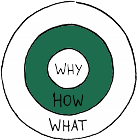
T2.0 + Stanford d.school Design Thinking Method Guide
Bridging Stanford d.school Design Thinking and Transformation 2.0 to Harness Human-Centred Innovation to Solve Complex Transformation Challenges
Overview
This guide demonstrates how Stanford d.school’s Design Thinking practice enriches the execution layer of Transformation 2.0 (T2.0). T2.0 is a scalable, human-centred innovation framework that provides a lean, adaptive model for strategy co-creation and transformation governance. Stanford’s Design Thinking offers a robust toolkit for human-centred discovery, ideation, and rapid prototyping.
By combining the two:
- T2.0 clarifies strategic intent and aligns leadership.
- Stanford Design Thinking empowers teams to solve user-centric problems with creativity and empathy during the execution phases.
Key Principle of Integration
“Use Stanford d.school Design Thinking not to re-invent, but to empower initiative execution inside the T2.0 scaffolding.”
T2.0 Practice Pattern Phases with Design Thinking Integration
Phase 1: SHAPE
Purpose: Establish strategic intent and executive alignment.
Design Thinking Role:
Minimal. At this stage, human-centred principles are embedded in framing but not in execution.
Activities:
- Co-designing transformation framing workshops.
- Defining five transformation dimensions:
- Leadership, People & Culture
- Business Models & Value Chains
- Data & Technology
- Teaming & Work Design
- Governance
Output:
- Transformation vision
- Strategic outcomes
- Initiative backlog aligned with the five dimensions
Why Design Thinking is not used deeply here:
Using full-scale design thinking to shape strategy would be prohibitively expensive and resource-intensive. T2.0 provides a leaner, executive-focused strategy accelerator that avoids this cost burden while enabling design-led initiatives later.
Phase 2: DISCOVER
Purpose: Co-create a strategy roadmap and options with broader stakeholder input.
Design Thinking Role:
Used sparingly, applied as inspiration for co-creation formats but not run as full design sprints.
Activities:
- Stakeholder mapping
- Strategic co-design sessions
- Roadmap and initiative refinement
Output:
- Strategic north star
- Prioritised execution pathways
- Initiative selection for the Jumpstart phase
Design Thinking Practice Reference:
Leverage radical collaboration and empathy-driven dialogue in workshops to expose hidden assumptions and divergent stakeholder views.
Phase 3: JUMPSTART
Purpose: Begin transformation execution through prioritised initiatives.
Design Thinking Role:
High. This is where the Stanford d.school process becomes central to selected initiatives.
Application Pattern:
Each initiative becomes a candidate for full Stanford Design Thinking execution:
- Empathise: Deep field research with user groups.
- Define: Create human-centred problem statements using Point-of-View (POV) and “How Might We” framing.
- Ideate: Generate creative solutions through brainstorming and visual thinking.
- Prototype: Build quick, low-fidelity models to explore user experience.
- Test: Engage users in iterative feedback loops.
Key Criteria:
- Multidisciplinary execution teams
- Human insight-driven problem framing
- Emphasis on tangible experiments, not static plans
- Governance via lean feedback cycles and decision loops
Why T2.0 Wins Here:
T2.0 provides lightweight governance, stakeholder alignment scaffolds, and a flexible container that Design Thinking plugs into, enabling clarity without suppressing creativity.
Phase 4: SCALE
Purpose: Expand successful patterns across the organisation.
Design Thinking Role:
Used for replication and re-contextualisation.
Activities:
- Identify opportunities to apply validated solution patterns in new domains
- Run shortened design sprints to localise proven solutions
- Refine teaming and cross-functional ways of working
Design Thinking Benefits:
- Keeps solutions grounded in local context
- Enables cross-functional uptake through radical collaboration
- Maintains a bias toward action and experimentation during scale-up
T2.0 Contribution:
Provides the scalable operating model, funding logic, and governance mechanics to support iterative experimentation without losing strategic coherence.
Phase 5: EMBED
Purpose: Institutionalise new capabilities and continuous transformation.
Design Thinking Role:
Shift from problem-solving to continuous user feedback loops and capability uplift.
Activities:
- Integrate design thinking mindsets in team culture
- Establish permanent roles for service design, experience management, or innovation
- Use design reviews, prototypes, and learning sprints in continuous improvement cycles
Outputs:
- Sustained human-centred innovation
- Embedded user empathy in service teams
- Transformation DNA institutionalised
T2.0 and Design Thinking Symbiosis:
T2.0 enables strategic reinforcement through learning accelerators, while Design Thinking fuels practical execution-level innovation.
Key Dimensions of the Combined Practice
Strategic Alignment & Intent Clarity (T2.0)
- Executive co-design
- Strategic backlogs
- Initiative framing across transformation dimensions
- Lean, scalable governance
Human-Centred Execution (Stanford d.school)
- Empathy and deep user insight
- Iterative solution cycles
- Creativity, visual thinking, and collaborative problem-solving
- Prototyping, testing, and user validation
Method Plug-In Flexibility
- Teams can choose Design Thinking for one initiative, Agile for another
- Enables autonomy while maintaining alignment: “shared language with local accents”
Key Criteria for Successful Integration
Strategic Layer (T2.0)
- Prioritise initiatives based on business and human value
- Avoid design-heavy approaches in initial alignment stages to stay lean
- Frame challenges as initiative backlogs across five transformation dimensions
Execution Layer (Stanford Design Thinking)
- Adopt creative confidence and a user-first mindset
- Apply “How Might We” framing for problem definitions
- Embrace failure and iteration during Jumpstart, Scale, and Embed
- Ensure strong visual communication and radical collaboration
Final Thought
By combining T2.0’s strategic scaffolding with Stanford’s execution excellence, organisations gain the clarity to scale transformation without bloated overheads, while also solving complex human problems with empathy and ingenuity.
T2.0 doesn’t replace Design Thinking; it enables it to thrive at scale.